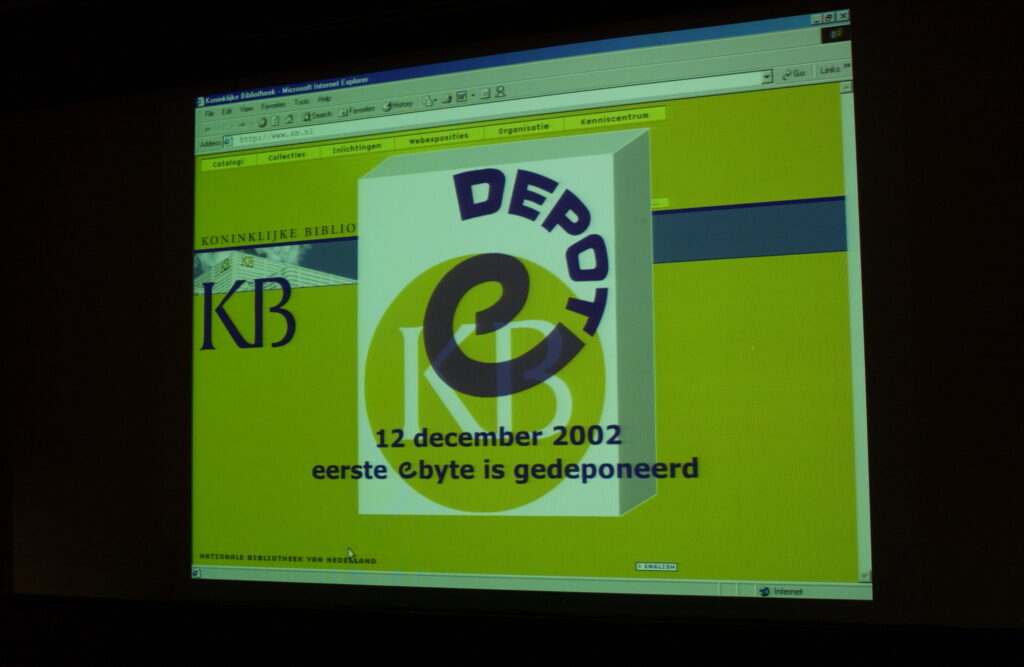
This blog was written and posted by Judith Rog, formally of the KBNL.
On Monday, 12 December 2022, the National Library of the Netherlands (KBNL) celebrated the twentieth anniversary of the e-Depot. Together with a large group of people who were all, in one way or another, involved with the e-Depot, we celebrated this day. Because after all, as Jeffrey van der Hoeven, head of the Digital Preservation department, emphasized at the opening of the afternoon, the fact that the KBNL has been able to successfully preserve digital publications in the e-Depot for the past 20 years, is not so much the result of systems and technique, but the result of the joint effort and perseverance of all those people during the past 20 years.
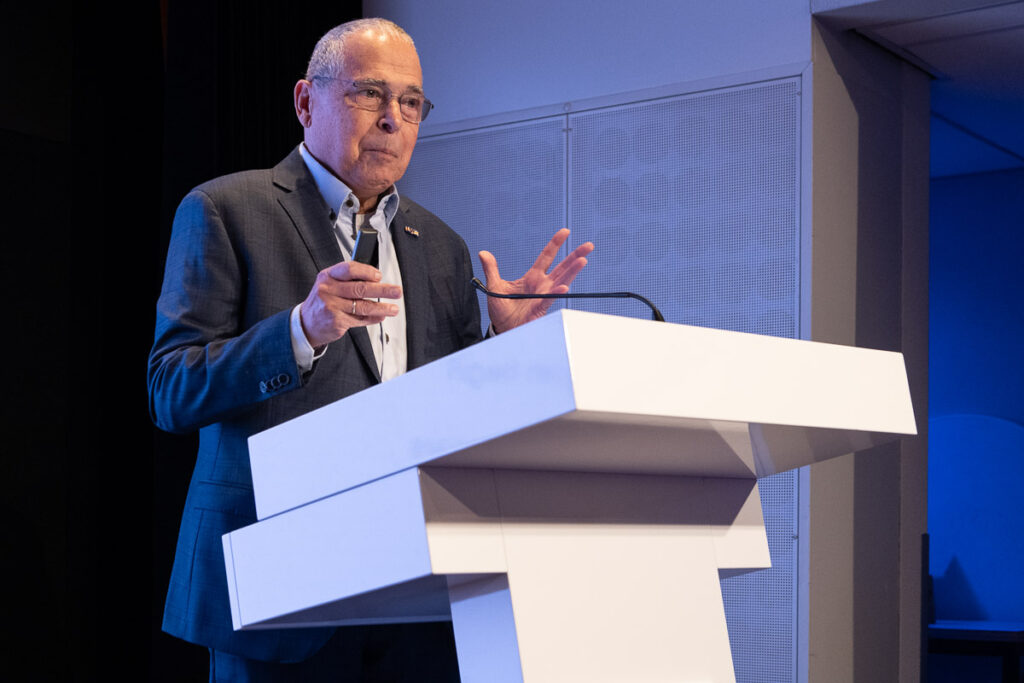
Despite the fact that we have chosen 12 December 2002 as the official date of birth of the operational e-Depot, the first initiatives to build such a system to safeguard digital publications already started before 2002. As Johan Steenbakkers (former director e-Strategy) told us, in 1995, Jeff Rothenberg’s article “Ensuring the Longevity of Digital Documents” appeared in Scientific American and around that time National Libraries began to realize that because of the growing stream of electronic publications and their deposit duty, they had no choice but to delve into the question of how to keep these publications accessible for users in the future. On Johan’s initiative, a group of European National Libraries together with the National Archive, some large publishers and IT companies, initiated the NEDLIB (Networked European Deposit Library) project in 1998. The project ended in 2000, resulting in a process model for an e-Depot and directions on how to apply it. Attention was also paid to standards for digital publishing, authenticity, and other aspects of digital preservation.
In the same period, NASA developed a Functional Model for digital preservation. This model was the basis for a formal certification process, which was to lead to an ISO standard for digital preservation. Because of the great similarities of the NASA Functional Model and the NEDLIB Process Model, NEDLIB’s terminology was aligned with that of the functional model. At the request of NEDLIB, the NASA functional model was then expanded with an ingest function. NEDLIB has thus actively participated in the development and dissemination of OAIS (ISO 14721), the standard for digital preservation.
KBNL then set up two pilot systems together with IBM. These were, world-wide, the first implementations of an e-Depot according to the OAIS standard. This also applied to the operational KBNL’s e-Depot system built after the pilot phase, which was put into operation on 12 December 2002. And with that, we arrived at the birth of the operational e-Depot.
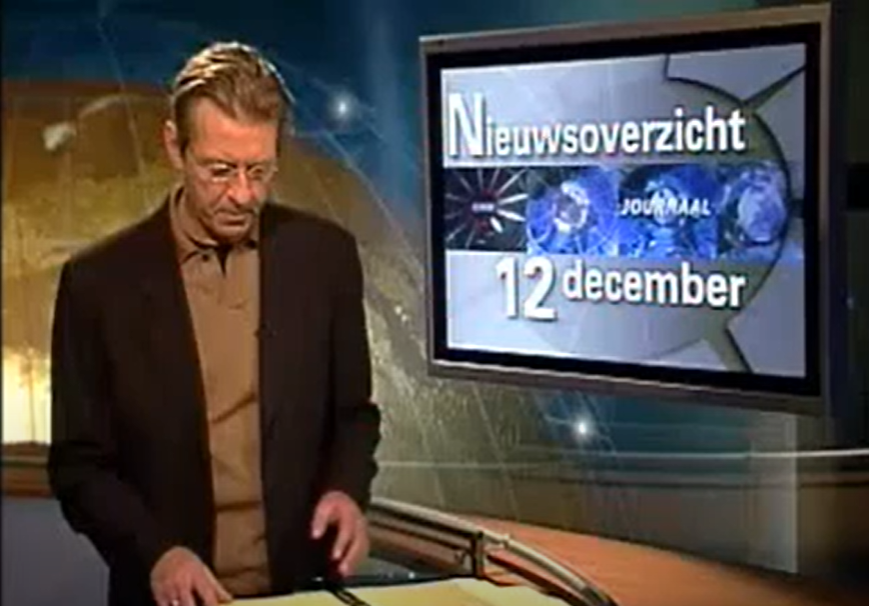
Inge Hofsink (preservation metadata specialist) then took us through the years that followed. She told the honest story of how in the years that followed, despite the tireless effort of people, the organization’s focus on preserving digital publications, which is an absolute necessity to do the job, was not always equally present. The processing of digital publications was at its height, the work of a group of about 20 people, but at a later low point this was reduced to six employees.
But fortunately, better times came. After the shift to digital was also made on the acquisition side of the library, the organisation again realised that the preservation of digital publications needs full and dedicated attention. The current Digital Preservation department was founded in 2017. Judith Rog (product manager e-Depot) told us about the initiatives that started since then. The library selected Clarivate’s/Ex Libris’ Rosetta as a new Digital Asset Management and Preservation System, and purchased a new storage system. At the same time, we outlined our preservation policy, and as confirmation that we are on the right track again, the e-Depot was awarded the Core Trust Seal. With these achievements and developments on the go we are confident that KBNL is able to preserve the digital collections entrusted to us for the next 20 years and more.
And that’s why we ended this festive day with a toast to the future, a toast to the e-Depot, but above all, a toast to all the people who made this possible together with us!
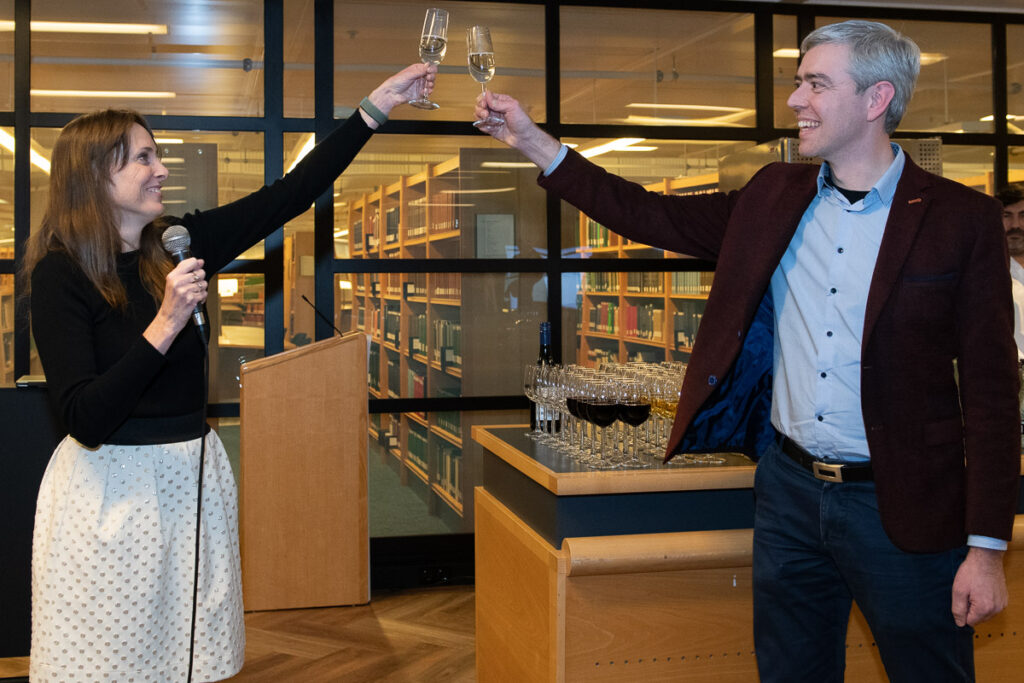
Facts and figures
On 1 October 2022 the current KBNL’s e-Depot contained more than 40 million publications consisting of:
- More than 37 million journal articles;
- More than 100.000 eBooks;
- Almost three million scientific publications harvested from university repositories.
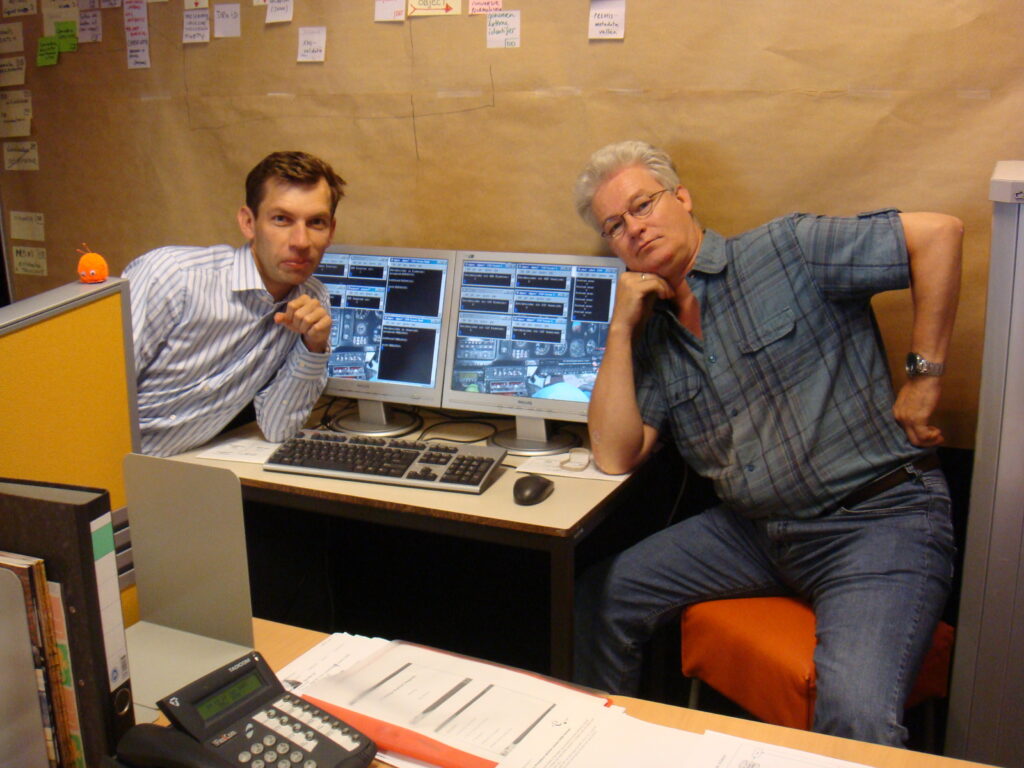
This adds up to 742.863.000 files and 93TB of storage. In the first three quarters of this year on average 12.129 new publications were ingested on every working day.
The new e-Depot based on Clarivate/Ex Libris’ Rosetta will not only hold all publications from the current e-Depot, but also:
- Digitised books, newspapers and journals (currently more than 130 million pages)
- The regular harvests of over 22.000 websites
- Digital content from physical media carriers such as CD-ROMs, DVDs, floppy disks (currently over 30.000 CD-ROMS and DVDs are digitised).
And many other collections such as born-digital newspapers and digitised manuscripts.
Read more
Interview about the 20th anniversary of the e-Depot https://www.kb.nl/en/kb-celebrates-20-year-e-depot-anniversary
National library of the Netherlands receives CoreTrustSeal for its e-Depot https://www.kb.nl/en/actueel/nieuws/national-library-netherlands-receives-coretrustseal-its-e-depot
KBNL selects Clarivate’s/Ex Libris’s Rosetta as new Digital Asset Management and Preservation System https://www.kb.nl/en/actueel/nieuws/dutch-national-library-steps-new-future-digital-archiving
KBNL’s preservation policy https://www.kb.nl/en/about-us/expertise/preservation-policy
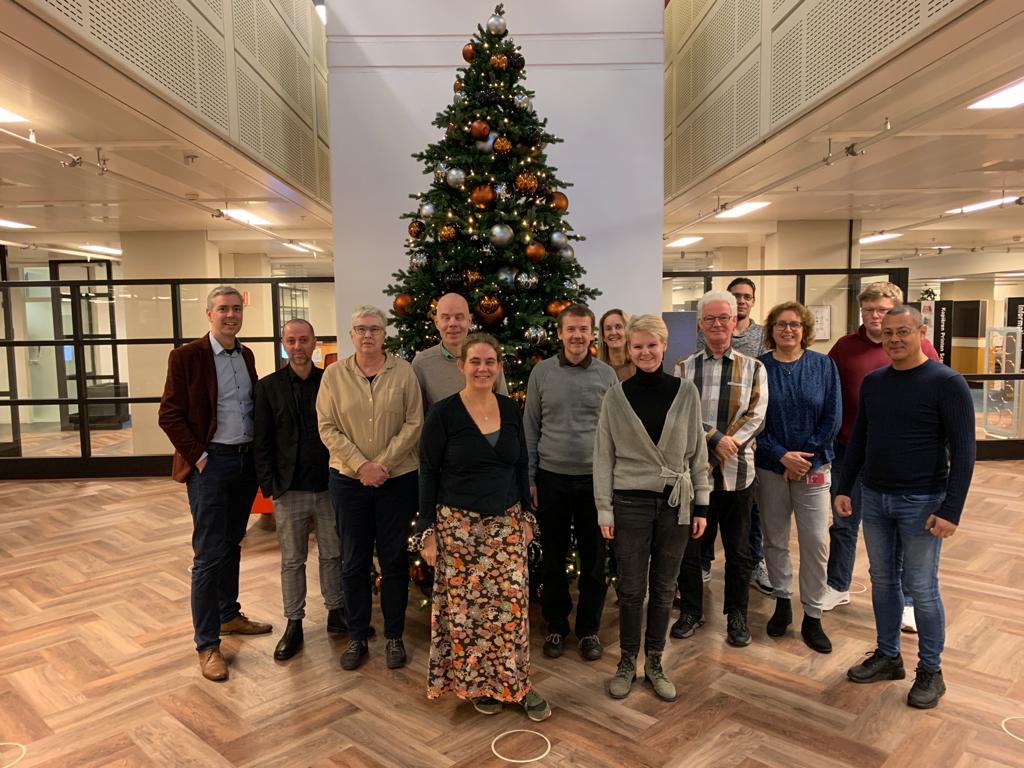




March 31, 2023 @ 7:12 pm CEST
Here’s a very belated “happy birthday, e-depot” from me and I raise my glass tonight to the great digital preservation staff at KB and to the next 20 years!